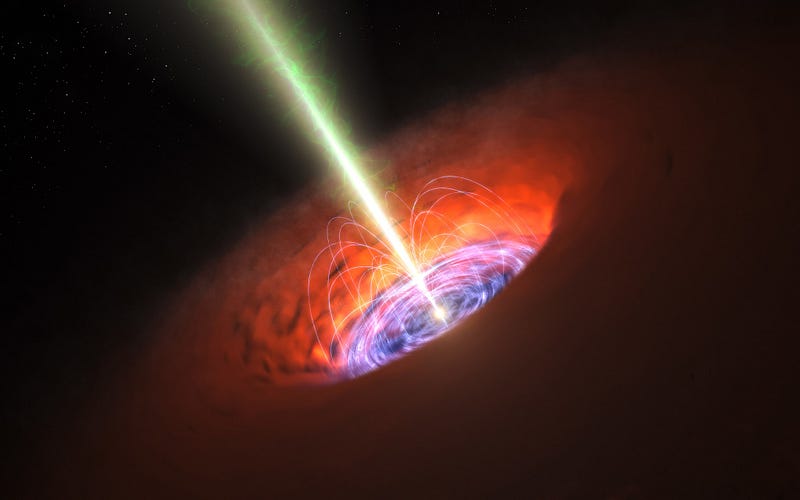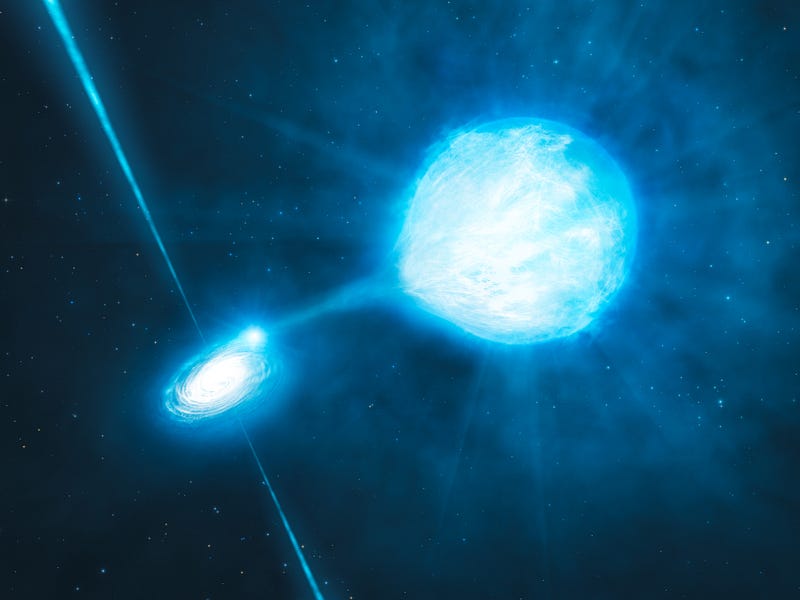Gold: A Cosmic Treasure Formed Around Black Holes and Supernovae
Written on
The Formation of Gold in the Cosmos
Gold is not solely a product of supernova explosions; it can also emerge in the vicinity of black holes! Recent studies suggest that the extreme conditions present around black holes may allow for the creation of elements heavier than iron, such as platinum, gold, and mercury. Previously, it was believed that these processes exclusively occurred during supernova explosions and neutron star collisions.

Gold has captivated human curiosity for centuries. Alchemists spent ages trying to fabricate this precious metal, often attempting to transform mercury into gold. They were tantalizingly close, yet ultimately unsuccessful.
In contemporary science, we understand that all elements consist of atoms, which contain nuclei made up of protons and neutrons, with electrons orbiting around them. The number of protons, referred to as the atomic number, determines an atom's chemical characteristics. Gold has 79 protons, while mercury has 80.
By removing a single proton from a mercury atom’s nucleus, it theoretically could be converted into gold. However, this process is extremely challenging due to the strong forces binding protons and neutrons together. To achieve this, energies far beyond what ancient alchemists could have conceived are required.
Hantaro Nagaoka successfully created gold and platinum from mercury in 1924 by applying a staggering 150,000 volts in one of the earliest particle accelerators. This high-energy input enabled accelerated electrons to dislodge protons from mercury nuclei, leading to the formation of gold and platinum.
Nucleosynthesis: The Birth of Elements in Stars
In the vastness of space, elements form within stars as hydrogen and helium nuclei collide and fuse, gradually creating heavier elements. This thermonuclear fusion is the source of a star's energy. However, the fusion process halts at nickel, which has 28 protons, as there isn't enough energy available to forge heavier elements within stellar interiors. When the atomic nucleus contains too many protons, the repulsive forces among them become overpowering, making fusion energy-absorbing rather than energy-releasing.
So, how did gold come to exist in the universe, including our own planet? The consensus among scientists is that the formation of heavier elements necessitates cosmic cataclysms. Explosive supernovae and neutron star collisions generate sufficient energy for this process.
A team of researchers from Belgium, Japan, and Germany has proposed that black holes can also serve as sites for the production of heavier elements. Some black holes originate from neutron star collisions, which have been observed consuming neutron stars.

When the remnant object possesses sufficient mass, it collapses into a black hole due to gravitational forces. This collapse is rapid, causing some material to remain outside the event horizon, the point of no return where even light cannot escape the black hole’s grip. The leftover matter begins to orbit the black hole, forming an accretion disk. As this matter accelerates to incredibly high speeds, it generates enough energy to facilitate the creation of gold, a process known as the "r-process."
The r-process, or rapid neutron capture process, involves the quick accumulation of neutrons by atomic nuclei, forming unstable, neutron-rich nuclei. These nuclei undergo a series of reactions where neutrons convert into protons (beta-minus decay), resulting in the production of heavier elements with higher atomic numbers. For instance, iron can be transformed into platinum, gold, or mercury.
Understanding the Formation of Heavy Elements
The research team conducted complex computer simulations to analyze the rates of neutron and proton transitions in various types of accretion disks. Their findings indicate that such disks are rich in fast-moving neutrons, given they meet specific criteria. Dr. Olivier Just explains that the mass of the disk is critical; it must not be too small, as that would hinder neutron acceleration, nor too large, which would trigger reverse reactions (beta-plus decay) that reduce the atomic number.
The simulations suggest that the optimal mass range for disks where heavier elements can form lies between one-hundredth and one-tenth the mass of the Sun.

The researchers assert that their simulations provide compelling evidence for the formation of heavy elements via the r-process in accretion disks around black holes. They also hope to identify the radiation produced during the formation of these elements, enabling them to validate their model through observational data.
The first video titled "Q&A 123: What if a Supernova Exploded Beside a Black Hole? And More..." explores fascinating scenarios related to black holes and supernovae, offering insights into cosmic phenomena.
The second video, "Astrophotography - How Gold is Made in a Supernova," delves into the astrophysical processes that contribute to the formation of gold in the universe.
Conclusion
In summary, the understanding of how gold and other heavy elements are formed has evolved significantly. No longer confined to the aftermath of supernovae, these processes can also take place around black holes, further enriching our knowledge of the cosmos.